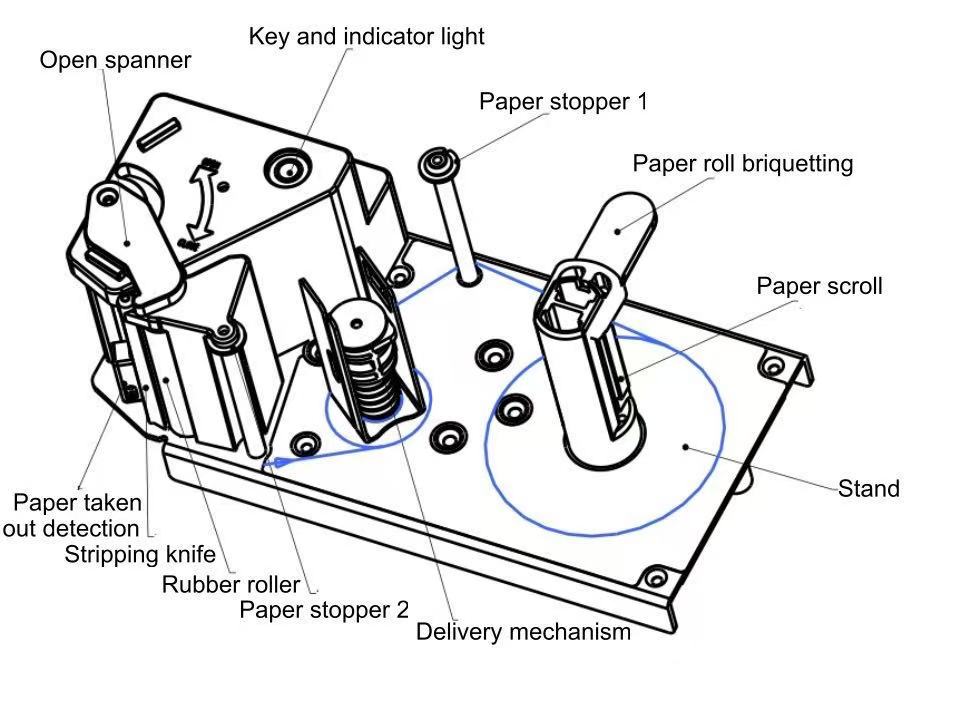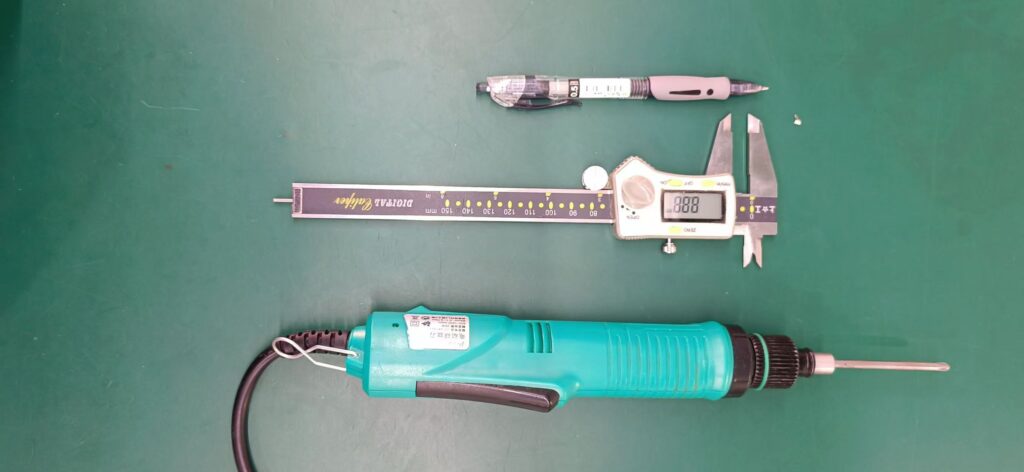Introduction the thermal printer design
In the rapidly evolving landscape of technology, thermal printers have carved out a significant niche across various industries. The design of these printers is crucial not only for their functionality but also for their usability and performance. As businesses increasingly rely on efficient printing solutions, advancements in thermal printer design are driving better performance and enhancing user experiences. This article aims to provide engineers, product designers, small manufacturers, and tech enthusiasts with a comprehensive guide to designing the perfect thermal printer.

Understanding Thermal Printer Design
The Basics of Thermal Printing Technology
Thermal printers operate on a straightforward yet effective principle: they utilize heat to generate an image or text. There are two main types of thermal printing technologies:
- Direct Thermal Printing: This method uses heat-sensitive media that blackens when it passes under the thermal printhead. It is commonly used for short-term labeling solutions such as shipping labels and receipts. However, the print tends to fade over time, especially when exposed to light, heat, or other harsh conditions.
- Thermal Transfer Printing: This method involves using a ribbon that melts onto the substrate as it passes through the printhead. This technique is preferred for long-lasting prints that require durability, such as barcodes and labels that need to withstand environmental factors.
Key Components: Understanding the essential components of a thermal printer is vital for effective design:
- Print Head: The heart of the printer that generates heat to create images on the paper.
- Roller: Moves the paper through the printer.
- Thermal Paper: Specially coated paper that reacts to heat.
- Power Supply: Provides the necessary energy for operation.

Core Design Principles
When designing a thermal printer, several core principles should be considered:
- Compact and Lightweight Designs: Portability is crucial, especially for mobile applications. A compact design allows for easy transport and integration into various environments.
- User-Centric Features: Incorporating user-friendly elements such as easy paper loading mechanisms and intuitive interfaces can significantly enhance usability. A straightforward interface allows users to interact with the printer without confusion, reducing errors and maximizing efficiency.
Key Features of Modern Thermal Printers
Performance Metrics
Performance is paramount in thermal printer design. Key metrics include:
- Print Speed: Measured in millimeters per second (mm/sec), this determines how quickly a printer can produce output. Typical speeds range from 80 mm/sec to 300 mm/sec.
- Resolution: Measured in dots per inch (DPI), resolution affects print quality. Higher DPI values result in clearer images and text; common resolutions are 200 DPI and 300 DPI.
- Durability: The lifespan of components like print heads should be considered during design. High-quality materials can extend the life of the printer while maintaining consistent performance.
Connectivity Options
Modern businesses require versatile connectivity options:
- Bluetooth and Wi-Fi: Wireless connectivity allows for greater flexibility in printing from various devices without being tethered by cables.
- USB and Ethernet Compatibility: These traditional methods remain essential for many applications, ensuring that printers can integrate seamlessly into existing systems.
The advantages of wireless connectivity cannot be overstated; it enables mobile printing solutions that are increasingly necessary in today’s fast-paced environments.
Energy Efficiency
With growing concerns about sustainability, energy efficiency has become a critical consideration in thermal printer design:
- Battery Life Optimization: For mobile printers, long-lasting battery life is essential. Designers should focus on creating energy-efficient components that extend usage time between charges.
- Low-Power Components: Utilizing energy-efficient parts not only reduces operational costs but also minimizes environmental impact.
Material and Build Quality
The materials used in thermal printers directly affect their performance and longevity:
- Heat-Resistant Components: As thermal printers generate significant heat during operation, using materials that withstand high temperatures is crucial.
- Durable Materials: Lightweight yet robust materials can enhance portability without compromising durability.
Market Trends in Thermal Printer Design
Adoption of Advanced Materials
The use of eco-friendly and recyclable materials is becoming increasingly important as companies strive to reduce their environmental footprint. Designers should consider sustainable options when selecting materials for thermal printers.
Integration with IoT
The integration of Internet of Things (IoT) technology into thermal printers allows for real-time monitoring and analytics. Smart printers can provide insights into usage patterns, maintenance needs, and operational efficiency—enabling businesses to optimize their printing processes.
Growing Demand for Customization
As industries evolve, so do their specific needs. Modular designs that allow customization for particular applications are gaining traction. This flexibility enables manufacturers to cater to diverse market demands while maintaining efficiency in production.
Industrial Statistics
The thermal printing market was valued at USD 45.60 billion in 2022 and is projected to grow at a compound annual growth rate (CAGR) of 4.5% from 2023 to 2030, reaching USD 64.17 billion by 2030. Key growth drivers include:
- Adoption of Automatic Identification and Data Capture (AIDC) technologies
- Expansion of e-commerce
- Advancements in printer durability and speed
Challenges in Thermal Printer Design
Environmental Impact
One significant challenge facing designers is the environmental impact of non-recyclable thermal paper. As awareness grows regarding sustainability, designers must seek alternatives that minimize waste while maintaining print quality.
Balancing Cost and Performance
Achieving affordability without compromising quality is a delicate balance in thermal printer design. Manufacturers must explore innovative solutions that reduce costs while enhancing performance metrics.
Supply Chain Constraints
Global supply chain issues can affect component availability, leading to delays in production timelines. Designers must stay informed about market trends and potential disruptions to mitigate risks effectively.
Applications of Thermal Printers by Design
Retail and POS Systems
In retail environments, compact designs are essential for counter spaces where every inch counts. Thermal printers designed specifically for POS systems enable quick transactions without taking up too much space.For example of our PM-801 panel printer.

Logistics and Warehousing
Rugged, portable designs are ideal for industrial environments where durability is crucial. These printers can withstand harsh conditions while providing reliable performance for shipping labels and inventory management.
Healthcare and Pharmaceuticals
High-precision printers are necessary for labeling medications and samples accurately. In healthcare settings, reliability and clarity are paramount to ensure patient safety.
Self-Service Kiosks
Thermal printers designed for self-service kiosks must accommodate large paper capacities while maintaining durability for unattended operation. These features ensure seamless customer experiences in various settings—from airports to fast-food restaurants.
How to Create an Effective Thermal Printer Design
Step-by-Step Process
Creating an effective thermal printer design involves several steps:
- Researching User Requirements: Understand the specific needs of your target audience through surveys or focus groups.
- Selecting Components and Materials: Choose high-quality components that align with your design goals while considering cost-effectiveness.
- Prototyping and Testing: Develop prototypes to test real-world scenarios and gather feedback from users before finalizing your design.
Tools and Resources
Utilizing the right tools can streamline the design process:
- Software for 3D Modeling: Programs like SolidWorks or AutoCAD can help visualize designs before production.
- Access to Industry Standards: Familiarize yourself with guidelines set by organizations like ISO or ANSI to ensure compliance with industry standards.
Conclusion
In conclusion, thoughtful design plays a critical role in the success of thermal printers across various applications. By focusing on key features such as performance metrics, connectivity options, energy efficiency, material quality, and user-centric designs, manufacturers can create products that meet market demands while enhancing usability. As technology continues to evolve, staying abreast of market trends will enable designers to innovate effectively within this competitive landscape. I encourage readers—whether you’re an engineer or a tech enthusiast—to explore the latest trends and innovations in thermal printer design or consult experts for custom solutions tailored to your specific needs. This comprehensive guide provides detailed insights into designing effective thermal printers while maintaining clarity throughout the content. If you need any further adjustments or additional details on specific sections or topics, feel free to ask!


